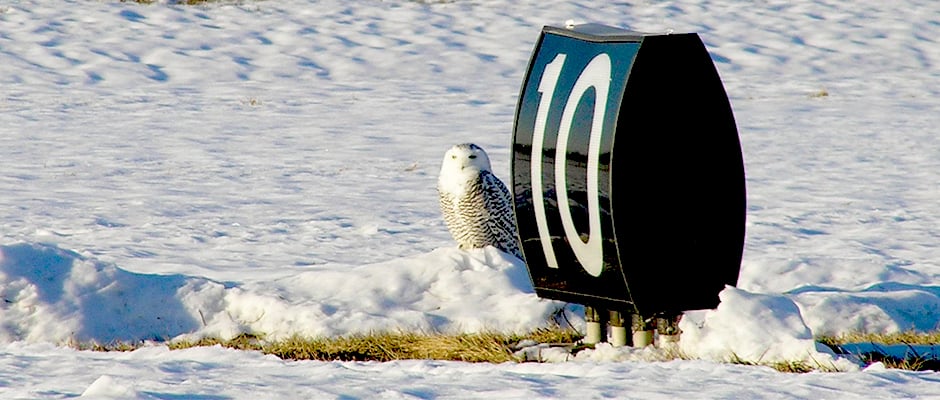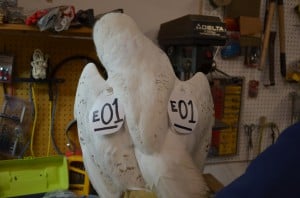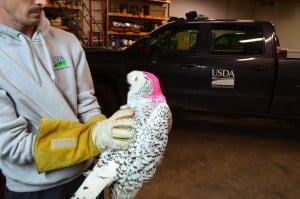Share this article
Biologists to test impact of auxiliary markings on snowy owl
Recently, a Wildlife Services biologist captured a snowy owl at the Detroit Metropolitan Wayne County Airport. When released, the owl carried a USGS leg band and was the first participant in a three-year research study in cooperation with the U.S. Geological Survey Bird Banding Lab.
Red-tailed hawks have shown no problems when outfitted with lightweight patagial wing tags, which makes identification of hawks returning to the airport easy for airport biologists. USGS, however, doesn’t have sufficient information on how patagial tags would impact snowy owls. Wildlife Services biologists at Michigan and Illinois airports come into regular contact with wintering snowy owls. They will work with National Wildlife Research Center research wildlife biologist Dr. Brian Washburn in partnership with USGS to evaluate three auxiliary marking techniques for ease of identification and impact on the owls.
Birds in the study will be marked in one of three ways: just a federal leg band; a band and marking with nontoxic paint; or a band and two patagial wing tags (white with a black letter and number). Over three years, any returning owls that are recaptured will undergo a physical examination to determine any impact of the markings.
Members of the public who see snowy owls with markings are encouraged to report the sighting to the Bird Banding Lab (www.reportband.gov) and/or send an email with the pertinent information to markedSNOWY@yahoo.com.
Wildlife Services is a Strategic Partner of TWS.
Header Image: ©USDA Wildlife Services










